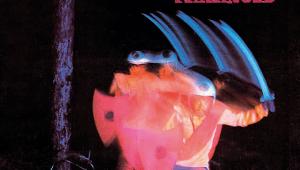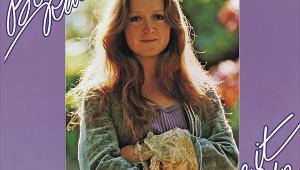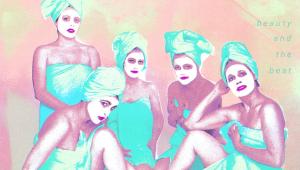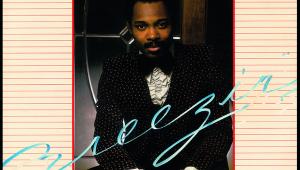The Stranglers: The Raven Page 2
![]()
Who's Laughing?
Burnel wound up journalists by provocatively carrying Adolf Hitler's Mein Kampf and they name-dropped Japanese poet and author Yukio Mishima, who committed seppuku – ritual disembowelment – in 1970. But one wonders what his take was on 'Death And Night And Blood (Yukio)' on their third album, 1978's Black And White, with its title delivered as a semi-comedic, yobbish terrace chant. At times like this it was difficult to tell what was serious and what wasn't. Were you laughing at them, with them, or were they laughing at you in your confusion?
![]()
The Stranglers didn't take criticism too well and built up an intimidating bully-boy image, reinforced by Burnel's karate prowess. As early as 1976, journalist Max Bell had been threatened and later on Jon Savage was punched for a bad review, but their most infamous stunt was luring a French journalist, Philippe Manoeuvre, up the Eiffel Tower where they strapped him to a girder with gaffer tape.
In 1979 the band parted company with their management team, who felt that they were losing direction. The first three albums had been released across 18 months and now there was a gap of that length before the arrival of the fourth. But this was a watershed moment, finding them moving away from the music that had been fuelled by punk and boiled down into the brutal songs on Black And White.
![]()
Before a new studio recording came a live album, Live: X-Certificate, which Burnel described as 'The end of an era… a compilation of the first three albums'. The new songs written for what would be 1979's The Raven were more complex, with layered lines built on terse, interlocking rhythmic elements that nodded back to progressive rock, while songs like album closer 'Genetix' predated '80s synth pop.
Norse Code
Both Cornwell and Burnel had worked on solo projects and the band had toured extensively, which fed into their writing. A trip to Japan inspired 'Ice', a track which dealt with seppuku and the Samurai code of honour, while some problems experienced with the authorities in Australia prompted 'Nuclear Device (The Wizard Of Aus)', its titular character being Joh Bjelke-Petersen, the then premier of Queensland who allegedly claimed aboriginal lands to get his hands on uranium. 'All the animals look so strange/All victims of a testing range', sang Cornwell.
![]()
Meanwhile, the rise of Ayatollah Khomeni in Iran inspired the scurrilous 'Shah Shah A Go Go', and 'Don't Bring Harry' found Burnel mournfully describing his remorse at his and Cornwell's unfathomable decision to experiment with using heroin. 'With a friend like him I don't need enemies', went the song.
Meninblack' was utterly bizarre, inspired by Jet Black's interest in UFOs. It has echoes of David Bowie's 'Oh! You Pretty Things', where a superior race of aliens visit Earth. 'Information can destroy/So we'll treat you just like toys' sings Burnel, through a vocoder that makes him sound like one of The Smurfs, which rather undermines its seriousness. The title track, meanwhile, refers to the ravens of Norse mythology that perch on Odin's shoulders, and would fly off to gather news. 'Duchess' is a finely crafted single and saw them invited onto Top Of The Pops.
![]()
The album was their fourth successive Top 5 hit, but further singles from the record fared less well. It could be viewed that The Stranglers had moved away from the New Wave or that as the '80s beckoned the genre was starting to lose its momentum. Either way, the musical landscape was changing.
Now, though, The Raven has been recognised as one of the band's finest releases. Although a step down from the high of the first three albums in purely commercial terms, it was artistically successful and helped widen the group's appeal.
In MOJO magazine in 2010 it was considered The Stranglers' best album. Burnel, however, would rank it in the 'top three': 'Every song is distinct. All the tracks stand out. The song writing is pretty good and it takes you on a journey'.


















































